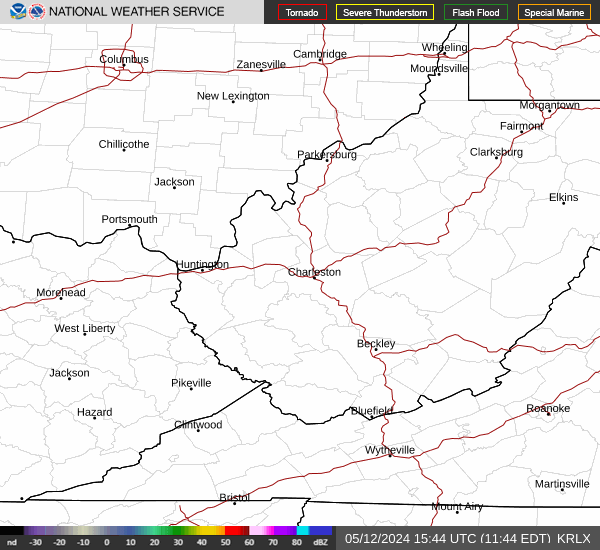Issued: 12am on Thursday, January 1st 1970
Technical Forecast Discussion
Short Term (Sunday 8/4 through Wednesday 8/7)
A split in the flow pattern is continually present for Southeast Ohio as more organized shortwaves are located in the northeast and north central U.S. Weak and subtle troughing persists over the southern Great Lakes that extends south of the region and is consistently absent of any upper level flow and major forcing mechanisms. High pressure near the surface has been contributing to the fair conditions, but has slightly diminished over the weekend with values around 1016mb to 1015mb. Once again, mostly clear and calm conditions are expected for the remainder of Sunday as strong radiational cooling and decoupling near the surface will dominate. Therefore, patchy fog will begin to develop late overnight (4am-8am) and into Monday (and Tuesday) morning with favored areas being the valleys and lowlands. Inversions near the surface will break down and mix out with sunrise as Monday starts off fairly sunny. Despite, as moisture content remains relatively moderate in the mid-levels, consistently strong daytime heating has been influencing these isolated chances of afternoon showers/(weak) thunderstorms. Any initiation that bubbles up in the afternoon/early evening hours will remain weak in strength, well-limited and slow moving as these weak dynamics exist. This inconsistent trend will likely ensue through Tuesday in addition to more moisture being advected into the region from a southwesterly flow. Dewpoints will slowly be on the rise as values will increase through the lower to mid-60s by midweek and generate a warmer and muggier environment. Numerous upper shortwaves are projected to push eastward along southern Canada that will affect the region late Tuesday through Thursday. The aforementioned weak shortwave will push east by late Monday in the presence of the first (less organized) upper-level trough progressing along southern Canada. The first associated cold front will approach the region late Tuesday and begin to offer an increase in thunderstorm and rain shower activity. Cape values will remain modestly low, but some weak-moderate wind shear (700mb level) up to 30-35 knots will be present late Tuesday evening and into Wednesday. Severity will remain low, leaving the primary potential to some gusty winds and localized downpours. The second trough will dig and swing another frontal boundary over the region late Wednesday. Chances for more thunderstorm activity will pursue through Wednesday night and into Thursday as the final disturbance is projected to exit the region early on Friday. Temperatures will be slightly above average through the forecast period, but will begin to be affected with any increase in cloud cover or rain coverage by midweek.
Long Term (Thursday 8/8 through Saturday 8/10)
The final, but more organized upper-level trough will progressively dig and negatively tilt over the northern Great Lakes region by midday on Thursday. In addition, flow aloft will be greatly increased as the Jet will become more uniform. A few upper jet streaks downstream may reach up to 120 knots and will increase the mid-lower shear values upwards of 40 knots. The final and associated cold front is likely to approach the area on Thursday and swing through the region by early Friday morning. More chances of showers and thunderstorms will occur within the first part of this forecasted period. Mid-level lapse rates and CAPE values look to remain weak, which will limit the severity potential. Although, some available wind shear as mentioned, will create for some gusty winds in being the primary severe threat. CAA will swarm in with the passing of the cold front for Friday and cooler and drier air will be filtered in from the northwest. High pressure and upper-level ridging will dominate the region for the remainder of the weekend alongside slightly cooler temperatures.




